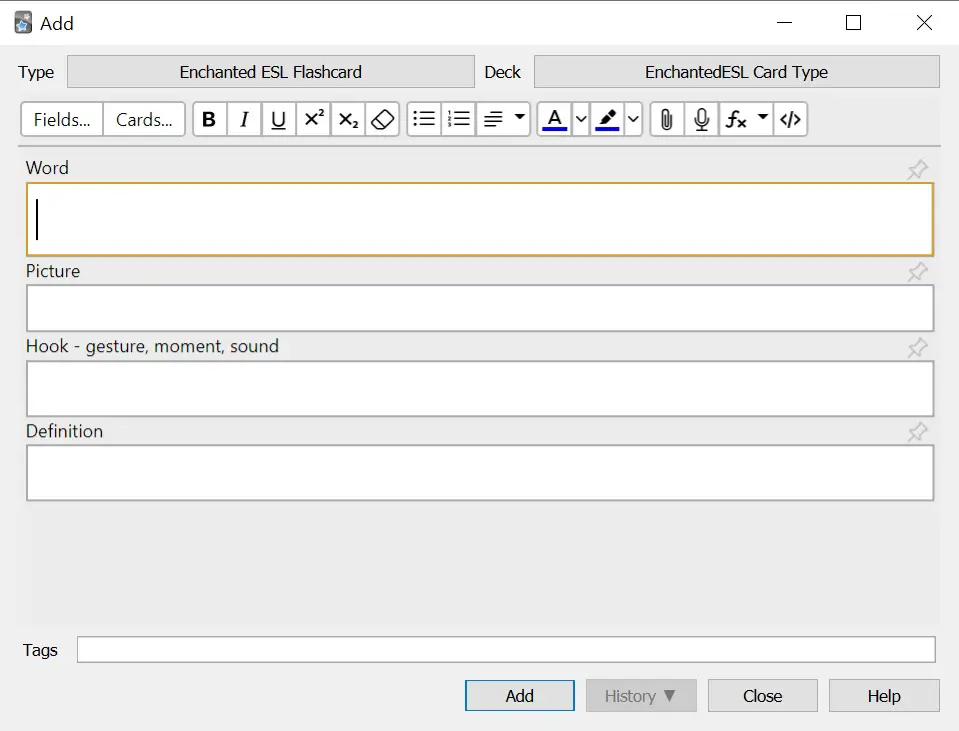Let’s be honest, teaching English to beginners is a daunting prospect for many teachers. Communication is limited, failure is frequent, and it’s hard to establish a rapport with students.
Nevertheless, it’s an important job. Everyone is a beginner at some point in their life. And this stage of their learning journey lays the foundation for future success.
No pressure, then. But it’s not all doom and gloom. In fact, teaching beginners isn’t as terrifying or challenging as it sounds, as long as you approach it in the right way.
That’s why I’ve written this article. The internet is full of guides like this, but I feel many of them are lacking in depth and practicality. Everything here comes from my own personal experience of finding out what works and what doesn’t.
Why believe me? Well, I’ve been an EFL teacher since 2015, teaching students of all ages and levels in language academies, public schools and private classes. I also have a PGCE and QTS as well as various TEFL qualifications.
Without further ado, let’s get to the 9 tips.
- Start with building blocks and add complexity
- Simple is best
- Boost initial memorisation with spaced repetition apps, like Anki
- Use images and realia
- Use gestures to communicate ideas
- Give clear, step-by-step instructions
- Create the right atmosphere and expectations
- Create engaging lessons with fun activities and games
- Don’t forget about writing
1. Start with building blocks and add complexity
Sentences are really hard to construct when you have no idea which words to use. It’s like trying to build a wall before you know what a brick is.
So, while you may want to start with simple greetings (hello, how are you? I’m fine, thank you) the main focus of your initial teaching should target a more fundamental level.
Here’s the order I suggest you teach things to beginners:
- Letters & numbers
- Pronunciation of simple sounds (phonics)
- Simple nouns (1 or 2 syllables) with a focus on pronunciation
- Simple verbs (1 or 2 syllables) with a focus on pronunciation
- Subject pronouns (I, you, he/she/it, etc.)
- Basic sentences with a subject, verb and object (e.g. I like cheese.)
- Basic questions (e.g. Do you like cheese?)
The sounds of English are hard. The relationship between sounds and written letters is, let’s say… complicated. Some advanced students never really get a grip on them.
That’s why training with phonics is really important at an early stage. Recognising certain patterns of letters in English and applying them to new words is the best way to set students up for success. Without this understanding, every new word is a minefield of potential mistakes.

Let me give you an example. The word “picture” is mispronounced by almost all English learners in the country where I work, Spain. They say “pic-too-reh” or “pic-toor”, when really it should be “pic-cha”.
The “-ture” pattern is quite common in English. Nature, structure, creature, puncture, future, gesture, etc.
With very few exceptions, those four letters are pronounced in the same way every time, the “cha” sound. If students recognise this pattern from an early stage, they can apply it to all similar words as they go forward, and their pronunciation will be much better.
It’s hard to retro-actively fix pronunciation issues. Once someone has said the word incorrectly enough times, it gets ingrained in their mind, and it takes serious effort to change it.
But you don’t need to cover phonics in its totality right from the beginning. If you spend too long on it, students will get bored. You have to get to learning words at some point. Go for common sounds and continue with advanced phonics as students progress.

Vocab should start with short nouns, focusing on pronunciation, then move on to simple verbs (like, play, eat, etc.).
When you’ve established a good bank of vocabulary (50-100 words), you can start gluing them together in very simple sentences. The next step is forming basic questions.
All the while, you should still be concentrating on phonics.
2. Simple is best
With young children, it’s a given that you’ll keep things simple. Lots of repetition. No abstract concepts like verb tenses and “relative pronouns”. Because, obviously, they aren’t at a stage of development to understand those things.
Use the same principle when teaching older students, too. It’s really tempting to rush on and start talking about grammatical structures and more technical approaches, but you must resist this. And encourage your students to resist it, too.
It takes time to integrate and assimilate new information. This is even more true in a performative subject like English, where the words and sentences have to be reproduced.
In many ways, learning English (and other languages) is like learning a musical instrument.
There’s an academic side to it, learning to read sheet music, understanding rhythms, etc. And there’s a mechanical side. At a beginner level, the practical side should take precedent.

If you’re teaching someone how to play the guitar, fundamental techniques are crucial. How to pluck the string, how to position the wrist and apply pressure with the fingers. How to move from one fret to another.
This “mechanical” work is like phonics and vocabulary in English.
A guitar teacher would (or should) never get a beginner student to learn the B minor scale on day one. First, they need to know the notes on the fretboard and be able to play them individually.
Likewise, an English teacher should never get a beginner student to start constructing sentences in the present continuous on day one.
The point is, don’t rush ahead. Going too fast gives an illusion of progress, but if you skimp on the foundations, the house will crumble later on.
3. Boost initial memorisation with spaced repetition apps, like Anki
So, I’ve just told you all about keeping things simple. Repetition of sounds and short words. Do it again and again until it’s fixed and fully integrated.
Great. But doesn’t that take a long time? And isn’t it quite boring?
Yes, and no. If you do it with traditional rote memorisation, sure. But nowadays there are much better ways of rapidly learning simple vocabulary and remembering phonic patterns.

For me, the best way is to use spaced repetition apps, of which Anki stands out as the most flexible and effective. You can download the program to your PC here, or get the app for your device.
I’ve written extensively on the benefits of Anki, and it forms a large part of my method of vocab teaching.
To get the in-depth look at Anki, head to this article Supercharge EFL/ESL Vocab With Spaced Repetition and for the overarching vocab strategy, read: Best Method to Improve EFL/ESL Students’ Vocabulary: 9 Steps.
In short, spaced repetition is a process by which you memorise vocabulary on flashcards, repeating the difficult words more frequently than those that are easy. It’s a daily (or weekly) routine with proven long-term effectiveness.
Anki is an app that automates everything. Not only does the algorithm figure out when you’re about to forget the word, and show you the flashcard then, but it allows you to add audio for correct pronunciation, as well as definitions, images, and other memorisation hooks.
My students have learned hundreds of new words using Anki and know things that even their school teachers don’t.

What’s more, you can use Anki right from the start. With the ability to add audio, you can practice letters and pronunciation, streamlining that initial phonics training.
However, there are two main hurdles to overcome with Anki. First, it requires regular and consistent practice. Ideally, you’d do it every day, but weekly can work too. Students of all ages need support to make it a routine.
Secondly, it’s hard to implement it in a large class situation. It’s very individual. Each student has their own set of reviews and repetitions based on the algorithm, so they each need regular time on their own with an electronic device to really get the best out of it.
Saying that, Anki isn’t the only option. There are other spaced repetition apps out there, and I’ve compared the best ones in this article: Is There Anything Better Than Anki? 3 SRS Alternatives.
4. Use images and realia
One of the great things about Anki is you can add images to the flashcards.
Images are extremely powerful memorisation tools, as our brains process visual information much better than letters and words.
On top of that, they provide another neural network around a word or phrase, meaning the route to remembering something is more accessible and durable.
For more on using images in teaching vocab, read my article How to Use Images for Deep Vocab Memorisation in EFL/ESL.
But images aren’t just for memorisation. With beginners, they’re a great way of communicating with your students despite the language barrier.
Imagine you’re trying to get the idea of “bottle” across to your students. You could describe it, say the word in their native language (tricky if it’s a multilingual class or you don’t know much in their language), or even go to Google Translate.
But why not just draw a picture of a bottle? You don’t have to be a great artist, and if you really hate drawing, show them an image online.
By doing this, you get the idea across instantly. Not only that, you avoid the issue of students translating from their language to English (which is fraught with problems).
Even better, show them a real bottle. Using realia is an effective and popular strategy to teach concrete nouns like food and household objects.
It’s limited, though. If you want to teach the word for “goat”, it’s probably easier just to get a picture rather than going to a farm or bringing a live goat to class.
5. Use gestures to communicate ideas
Not all words can be communicated with images. Many verbs and abstract nouns don’t have a concrete visual form, like those that are an action or feeling.
“Love”, for example. You may be able to find an image that expresses the idea of love, but it could get mixed up with “heart” or “like”.
Instead, consider a gesture. A simple heart shape with the hands and a caring smile on the face would work perfectly.

And what about “to dig”? A quick digging motion with the hands avoids any confusing pictures of holes in the ground.
Gestures activate the kinetic part of the brain, which is a really powerful way of boosting memorisation. Physical actions that are simple and clear have a serious impact.
To learn more about using gestures in memorisation, read my article: How to Use Gestures to Embed Vocab in EFL/ESL + 2 Games.
But gestures aren’t just for remembering words. They’re also an efficient way of communicating ideas to people who wouldn’t normally understand your spoken words.
When giving instructions, pointing, counting fingers and using commonly recognised signals helps with understanding more complex ideas.
6. Give clear, step-by-step instructions
As we just discussed, using gestures when giving instructions is a brilliant way of communicating your ideas and supplementing the words you say.
Instructions are a real stumbling block for EFL/ESL teachers. Sometimes, no matter how many times you repeat them, students can’t seem to follow, and it gets very frustrating.

How do you get your kids to tidy up the room, put the chairs on top of the tables and line up by the door, when they hardly understand you? Sometimes, it’s like they’re not even listening!
Well, consider that your instructions might be the problem. You may need to switch up how you give them, and I’ve got five tips to do just that.
- Use gestures (as mentioned above).
- Repeat at least twice (but not too many times).
- Keep your choice of words consistent and simple.
- Check students understand for real (not just saying “yes, I understand”).
- Don’t bombard them with multiple steps. One thing at a time.
For a full guide on how to give instructions in EFL/ESL classes, head to my article: How to Give Instructions in an EFL/ESL Lesson: 5 best tips.
7. Create the right atmosphere and expectations
When students start learning a new subject or skill, there are plenty of mental barriers to overcome.
Young kids tend to throw themselves at new things with reckless abandon, while teenagers and adults are often reluctant to take risks.
Taken to the extreme, both of these approaches are negative. You either get a wild, out-of-control classroom, or an environment in which fear and shame predominate.

Let’s tackle the first of these. Children (and some adults!) don’t have a clear idea of boundaries. It’s not always obvious to them what is acceptable and what isn’t, and most classroom behaviour problems arise from this lack of awareness.
Establishing clear expectations right from the start is a proactive way of preventing these issues before they even happen. And keeping those expectations consistent creates long-term stability.
But it’s not just about eliminating bad behaviour. Expectations about how students should approach English and engage with the subject are key, too. While you should make classes fun, students must all know that they’re in the class to learn, not just to have a good time. Promote positive attitudes.
When it comes to the other side of the spectrum, where students lack confidence, a calm, supportive atmosphere is critical.

If students don’t feel comfortable with failure – perhaps they’re afraid of getting mocked or criticised for making a mistake – they’ll rarely step outside their comfort zone and as a result won’t make progress.
This is most notable when practicing speaking, as it’s a performance. But it can be true in all aspects of the language, with students avoiding the possibility of getting bad grades, or actively putting themselves down to reduce the impact of potential failure.
Again, establishing expectations early on will prevent many issues. Genuine praise and kind encouragement when failure occurs goes a long way to boosting confidence.
This is a general rule for all subjects and ability levels, but it especially applies to beginner English students. Their perception of English as a subject now informs how motivated they are to keep going. If they have negative experiences, they won’t continue.
For more on establishing expectations, check out my guide: How to Set Rules & Expectations in Private EFL/ESL Classes. I wrote it for private tutors, but the concepts and practical steps apply to larger groups, too.
8. Create engaging lessons with fun activities and games
Motivation comes in two forms: extrinsic and intrinsic.
Extrinsic motivation is where you do something because the consequences of doing it are positive, or because they avoid something negative.
When learning English, extrinsically motivated students go to class because it improves their job prospects, makes them feel smarter, or because they’ll get punished by their parents if they don’t. There’s a spectrum of extrinsic motivations, but none of them relate to the actual experience of learning English.
Intrinsic motivation, on the other hand, is where you do something purely for pleasure and enjoyment.
English learners may be intrinsically motivated to go to class because the sessions are exciting, they feel happy there, and they have great social interactions.
In a perfect world, all students would arrive with intrinsic motivation. But the reality is, through negative schooling and social pressure (often familial), many students never find that intrinsic drive.
With beginner students, you have the chance to make English classes an enjoyable and fulfilling experience from the very beginning. Not only will this intrinsic motivation help them learn faster, but it’ll give them a positive concept of the subject heading into the future, long after your classes.
So how do you do this?
The previous tip (7) is a good place to start: creating the right atmosphere. But even a safe, comfortable place doesn’t guarantee engagement.
Three key things contribute to making the class a positive experience:
- Relationship with the teacher – energy, rapport, enthusiasm.
- Making boring work fun – gamification, varied and personalised activities.
- Games.
If students have a good relationship and rapport with you, the teacher, they’ll enjoy classes more. I’m sure you can remember a teacher from school who you hated. Chances are, they made you hate their subject, too. Don’t be them.
That doesn’t mean you have to be a people pleaser, though. Far from it. Sometimes you have to lay down the law. But remember you’re a big part of the learning experience, so be kind, generous and always bring a smile.
Making the drudgery of grammar and memorisation more interesting is a challenge. Nobody likes textbooks and drill exercises. But sometimes you can’t avoid them, so spice them up by personalising them to be about students’ interests, or adding some gamification.
Gamification is a powerful tool if applied well. I’ve used it to transform boring vocab tests into something students adore doing in every class. Learn how I did it here: Gamification in EFL/ESL: Guide to motivating students.
Gamification is making normal activities feel like games.
Sometimes, though, you can skip that step and just play a game!
Don’t be afraid to play games with adults, either. Just because they claim to be mature and sophisticated, it doesn’t mean they wouldn’t prefer to do something dynamic instead of another boring worksheet.
Looking for great games for beginners? Check out my lists 9 EFL/ESL Speaking Games & Activities Perfect for Beginners and 9 High Energy EFL/ESL Games for Boosting Vocabulary.
9. Don’t forget about writing
The four key language skills: reading, writing, listening and speaking are all equally important for English learners. But when teaching beginners, it’s easy to neglect some of them. Most notably writing.
Speaking is encouraged by good teachers, listening occurs naturally as you speak to students, and reading often happens when learning new words. Writing often seems to fall by the wayside.
And it’s not surprising. The type of writing we usually associate with EFL/ESL is producing essays, letters, applications, stories, etc. Not something you’d ever consider doing with beginners. And I don’t suggest you do.

So how can you practice writing?
Well, at its core, writing is transferring words from their verbal or mentally stored form onto paper. It’s translating sounds into letters.
I went on at length about the importance of phonics in the first tip, and recognising how to pronounce certain letters is a fundamental skill. But what about the reverse? How often do students practice listening to a word and trying to write it down on paper?
Not that often, I’d wager. Now, I’m not suggesting you do tedious dictation exercises. After all, this is the 21st century, we can do better. But practicing the mechanics of transforming sounds into letters needs practice.

Doing this reinforces the phonic relationship and gets students seeing more and more letter patterns.
And as they start writing simple sentences, the mechanical handwriting process and thought directed towards the words on the paper will organically embed grammar rules in their mind, like the fact the subject always goes before the verb, except in questions.
It’ll train them not to translate directly from their native language and reduce analysis paralysis.
Plus, it gives students confidence when advancing to higher levels. If they’re comfortable writing in English from the start, an essay won’t seem as intimidating.
I’ve written a detailed guide on teaching writing which you can read here: Big Guide to Teaching EFL/ESL Writing: 16 simple steps. And for a list of fantastic writing activities for beginners and intermediates, check out: 9 Exciting EFL/ESL Activities for Writing & Spelling.
For studious and determined pupils, you can suggest copy writing. This is where they simply copy word for word from a text. Their mind sees and absorbs the patterns over time.
For most people, though, writing isn’t always the most exciting, especially for younger kid. Use gamification and games to make it an enjoyable experience. And don’t overwork them. Just a few words or sentences per class can be enough to begin with.
Conclusion: Make an impact
There’s a lot to think about when teaching EFL/ESL to beginners. If you’re feeling overwhelmed, that’s perfectly normal. You don’t have to do everything in this guide straight away.
It takes time to develop teaching skills, and regardless of your experience, there’s always something to improve. The tips in this guide are meant as an endpoint. A place you can aim towards, not a minimum requirement.
So take one or two things you think are easiest, and implement them now. Take time to integrate them as part of your approach. Then, when you’re comfortable you’ve got them embedded, come back here and choose something else to add. Rinse and repeat.
And throughout your time teaching beginners, remember that their first impressions and experiences of learning the language massively affect their future progress. You have a huge impact on their lives. The joy of teaching is making that impact as positive as possible!
For more tips on EFL/ESL teaching, check out these other articles of mine:
9 EFL/ESL Games and Activities for Intermediate Learners
Why All EFL/ESL Teachers Should Use Role Play Activities
9 Items Every EFL/ESL Teacher Needs for Brilliant Classes
What Should You Teach EFL/ESL Students? New teacher guide
Gamification in EFL/ESL: Guide to motivating students
9 Best Free Apps for EFL/ESL Teachers and How to Use Them
How to Give Instructions in an EFL/ESL Lesson: 5 best tips
Best Method for Correcting EFL/ESL Writing: 9 Step Guide









